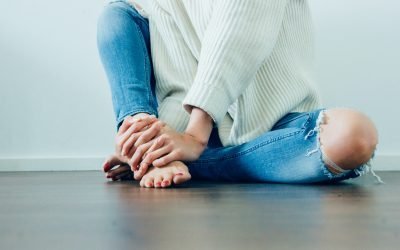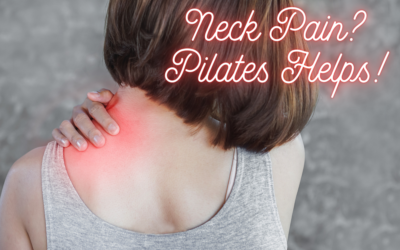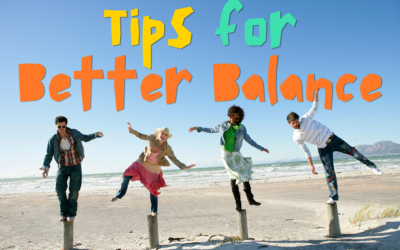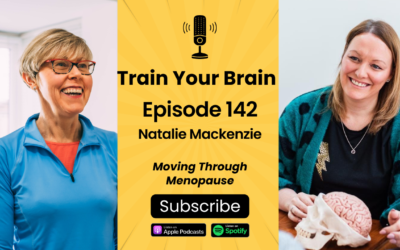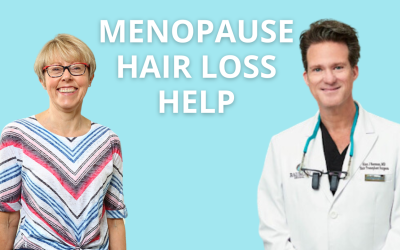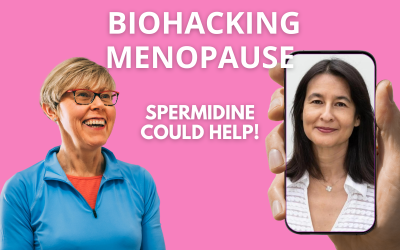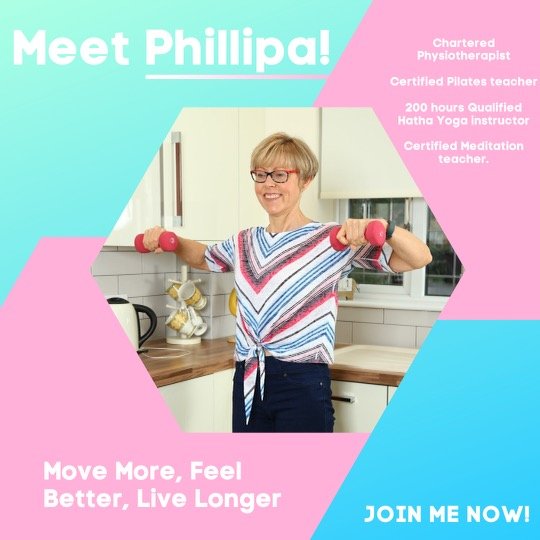Pilates or Yoga; What’s the difference?
I don’t need to tell you that movement and exercise are an important part of helping us to sustain a healthy lifestyle. As a Chartered Physiotherapist, I have witnessed first-hand the power of movement to heal the body and improve our quality of life.
My health struggles prompted me to explore both Pilates and Yoga and I can testify that both approaches carry significant benefits. But how do we choose which one is best for us?
In this blog, I am going to guide you through the fascinating histories, fundamental principles, and distinct differences between these two popular mind-body practices.
In this guide, you’ll gain a deeper understanding of Pilates and Yoga and their transformative potential. You can then determine which one you prefer or whether a combination of both would benefit you.
What Is Pilates?
Joseph Pilates, a visionary German physical trainer, laid the foundation for the Pilates method in the early 20th century.
Drawing inspiration from diverse disciplines such as yoga, martial arts, and gymnastics, Pilates envisioned a holistic system that would enhance both physical and mental well-being.
Pilates exercises are carefully designed to build strength, flexibility, and coordination, with a particular emphasis on the ‘powerhouse’ – the core muscles. Pilates exercises can be adapted to all fitness levels and customised to meet the specific needs of individuals, making it an inclusive practice suitable for everyone.
The Six Principles Of Pilates
Six core principles of Pilates guide you towards a harmonious integration of body and mind:
- Concentration – This is the cornerstone of Pilates and involves focused attention on each movement made. Over time, it helps you enhance your awareness of body mechanics to move more effectively and intentionally.
- Control – Every Pilates exercise is performed with deliberate, controlled motions to ensure proper form and alignment. Control helps to develop discipline and mindfulness during workouts to help create quality movements.
- Centring – This refers to activating and engaging your core muscles. Every Pilates movement stems from the centre and helps promote better posture and core strength.
- Precision – Being precise with your movements is crucial to ensure proper alignment and form. Precision helps you understand how your body responds to different exercises and prevent injury.
- Breathing – Breath control is significant in the mind-body connection. Synchronising your breathing with each movement enhances oxygen flow and focus while making you feel relaxed.
- Flow – This refers to the seamless transition between movements, ensuring each exercise is connected and performed gracefully. With this fluid and dynamic practice, flow helps prevent abrupt or jerky motions.
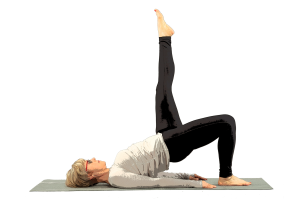
Types Of Pilates
Pilates has evolved in the time since Joseph Pilates died with many teachers adding their adaptations and variations. Commonly we think of Pilates as falling into four categories:
- Classical Pilates
Classical Pilates closely follows the original method developed by Joseph Pilates. It involves his complete set of exercises performed on the mat and uses specialised Pilates equipment, such as the Reformer, tower and Cadillac. This method can be more demanding on the body and requires higher levels of fitness at the entry point. - Contemporary/Modern Pilates
With new research in movement science and anatomy, contemporary Pilates is an evolution of the traditional method. It often combines selected traditional Pilates exercises with other movement approaches using small equipment like resistance bands and balls. This does mean however that exercises can be modified to meet the needs of people with different abilities. - Mat-based Pilates
This floor-based practice utilises body weight for resistance and includes exercises targeting core strength, flexibility and muscular endurance using the mat. It’s a popular choice for people exercising at home or in group classes as a mat is affordable and easily accessible. - Reformer Pilates
Joseph Pilates developed a specialised piece of equipment called the Reformer. The Reformer consists of a sliding carriage, springs and adjustable resistance. Exercises on this equipment provide a full-body workout, emphasising controlled movements and resistance training for increased strength and flexibility. The spring resistance can also be used to make exercises easier to achieve and can be tailored for an older age group and people recovering from injury or illness.
Clinical Pilates for Physiotherapists
Clinical Pilates is another variation of the original repertoire where health professionals are taught to modify the Pilates repertoire to use in rehabilitation after illness or injury. This approach can be particularly beneficial for people experiencing Low Back Pain when strengthening the core muscles can support the spine, thus reducing pain and disability. In addition to training in modern Pilates methods, I have undertaken additional training to teach Clinical Pilates.
Pilates is best for you if you:
- Want to do exercise to strengthen your core.
- Are less supple but still want to explore stretching.
- Have an underlying condition such as low back pain.
- Want to learn a new skill.
What Is Yoga?
The roots of Yoga stretch back thousands of years to ancient India, where it originated as a spiritual and philosophical practice.
Yoga, in its essence, seeks to unite the mind, body, and spirit through a combination of physical postures (asanas), breath control (pranayama), meditation, and ethical guidelines. The diverse landscape of yoga includes styles ranging from the dynamic and challenging Ashtanga to the gentle and meditative Hatha, each offering a unique path toward physical fitness, stress reduction, or spiritual enlightenment.
Types Of Yoga
The multitude of different types of yoga reflects the diversity of approaches and philosophies that have evolved over thousands of years. The practice of yoga has been shaped by various cultural, historical, and individual factors, leading to the development of distinct styles and traditions. Here are some types of yoga:
Hatha Yoga
Hatha Yoga is a broad foundational term encompassing physical postures (asanas) and breath control (pranayama). It is a gentle and accessible practice, making it suitable for beginners. Hatha classes typically focus on basic poses and alignment.
Vinyasa Yoga
Vinyasa, often referred to as “flow” yoga, emphasises the fluid transition between poses, synchronised with breathing. These classes are dynamic and can vary in intensity, making them suitable for people seeking a more energetic and challenging practice.
Ashtanga Yoga
Ashtanga Yoga follows a specific sequence of postures, known as the Primary Series, focusing on continuous flows of movement. It is a physically demanding practice of synchronising breath with advanced poses. Ashtanga is suitable for those seeking a structured and disciplined approach.
Iyengar Yoga
Iyengar Yoga places a strong emphasis on alignment and precision in each pose. Props such as belts, blocks, and blankets are often used to assist people in achieving proper alignment. Iyengar is suitable for all levels and is particularly beneficial for those with specific physical considerations or injuries.
Bikram Yoga
Bikram Yoga, also known as hot yoga, consists of a specific sequence of 26 postures and two breathing exercises practised in a heated room. The heat is intended to enhance flexibility and detoxification. Bikram is suitable for those who enjoy consistency and can tolerate high temperatures.
Kundalini Yoga
Kundalini Yoga aims to awaken the dormant spiritual energy (kundalini) through a combination of physical postures, breathwork, and chanting. It is a dynamic practice that incorporates repetitive movements and specific sequences. Kundalini is suitable for those seeking a transformative and spiritual experience.
Yin Yoga
Yin Yoga focuses on holding passive poses for an extended duration, typically three to five minutes or longer. The practice targets deep connective tissues and encourages relaxation. Yin is suitable for individuals looking to improve flexibility and cultivate mindfulness.
Restorative Yoga
Restorative Yoga focuses on relaxation and rejuvenation, using props to support the body in gentle poses. The slow-paced practice allows for extended holds that promote deep relaxation and stress relief. Restorative yoga is suitable for all levels and especially beneficial for those seeking relaxation and recovery.
Power Yoga
Power Yoga is a dynamic and fitness-oriented style that draws inspiration from Ashtanga. It typically involves a faster-paced sequence of poses to build strength, flexibility, and stamina. Power Yoga suits those looking for a challenging and physically demanding practice.
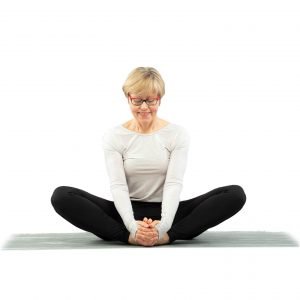
My Yoga Practice
I have explored a few different Yoga styles but settled on Hatha Yoga for my 200-hour training. In truth, the 200-hour training is just the start of your journey as a Yoga teacher. In addition, I have undertaken extra training and I use a blend of Hatha and Therapeutic Yoga in my work as a Physiotherapist and movement coach every day.
Yoga is best for you if you:
- Are experiencing symptoms of stress, difficulty sleeping or digestive difficulties.
- Want to improve or maintain your flexibility.
- Are interested in holistic approaches to health.
- Want to learn a new skill.
The Difference Between Pilates And Yoga
In my experience, Pilates and Yoga have a lot to offer in a therapeutic context and work very well alongside one another. Joseph Pilates took some of his inspiration from Yoga and some of his repertoire mirrors some of the Yoga Asanas. But there are some distinct differences outlined below:
Movement vs Stillness
Pilates is recognised for its dynamic, controlled movements targeting specific muscle groups. Through flowing sequences and intentional engagement of the core, Pilates enables precision and control in every motion.
Yoga combines a blend of dynamic movements and static poses. The focus often lies in holding postures, promoting enhanced flexibility, balance, and mental focus. This combination of movement and stillness characterises the diverse landscape of yoga styles.
Breathing Techniques
Pilates prioritises lateral ribcage breathing, encouraging a deep inhalation through the nose and a controlled exhale through pursed lips. This intentional breathwork serves as a guide for movement, enhancing concentration and promoting a mindful connection between breath and motion.
Yoga, meanwhile, incorporates a rich tapestry of breath control techniques or Pranayama, with practices such as Ujjayi or Ocean breath, alternate nostril breathing or skull shining breath. The breath in Yoga serves as a vital link, connecting the physical postures with the spiritual and meditative aspects of the practice.
Area of Focus and Benefits
Pilates directs its attention to the core muscles, including the abdominals, back, and pelvic floor. The exercises are meticulously designed to improve posture, stability, and overall strength, promoting a robust foundation for physical well-being.
With its holistic approach, Yoga addresses a broader spectrum of physical and mental aspects. While promoting flexibility and strength, Yoga also targets balance and mental clarity. Different yoga styles may emphasise specific areas, catering to a wide range of individual preferences and objectives.
Philosophical Approach
Pilates, while promoting a profound mind-body connection, primarily serves as a physical practice with a central focus on precision and controlled movements. The philosophy of Pilates revolves around the idea that a strong, well-aligned body is the key to overall health and vitality.
Yoga, on the other hand, is considered a way of life and integrates profound philosophical elements, including ethical guidelines (the Yamas and Niyamas) and principles of proper nutrition, relaxation and meditation. This fusion encourages a holistic approach to well-being, transcending the physical aspects to encompass mental and spiritual dimensions.
Online Pilates and Yoga Classes
If you’re a beginner who’d like to give Pilates and Yoga a go or a well-established exercise enthusiast, you can join me live on Zoom for Precizion Pilates and Hatha Yoga classes. Membership Plans are available to suit your needs, including live online classes, video recordings, special offers on workshops and much more!
Your first class is FREE, so you might as well give it a go!
Keep Moving
Phillipa
Co-Author:
Jodie Weavers aka The Word Weaver
Jodie is a blog writer who helps small businesses get more brand awareness by sharing their brand stories and expertise. She does this by using her love of learning to research target audiences, topics and keywords.
Having written blogs that show up on the first pages of search engines, Jodie thrives on the results she gets for her clients. If you’d like to learn more, you can find her on LinkedIn.




